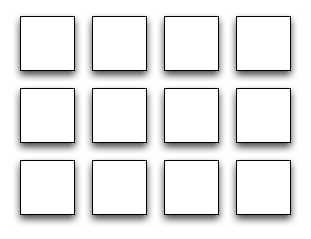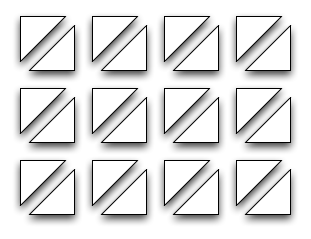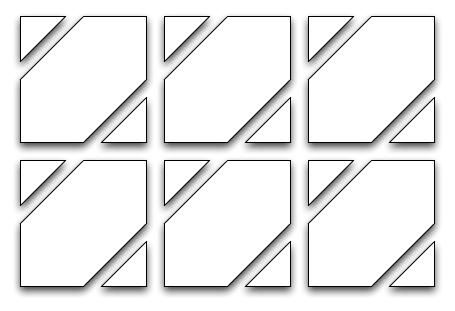wendy wrote:[...]Even so, one does not have to cross the street. The postie could go along a spiral around the road (unaffected by traffic), dropping his letters off.
Yeah, 4D
is rather convenient that way, in that intricate networks of 1D lines never have to intersect (be it roads or computer cables--I wish I were in 4D so that I don't have to deal with the tangle of wires under my desk all the time).
One could then also beach the cars somewhere off the sprialing or straight footpath, so that people can move along footpaths without having to climb over the beached cars, or crat-slips (driveways).
Which brings up an interesting point. With pedestrians, we don't have the problem of dangerous collisions, so why not use the entire 2D surface surrounding the road as a walkway? (Approximating the road as a tube.) It could be a pavement that surrounds the road, and cars can park along its inner surface so people can walk about freely with no need to climb over anything.
The average distance to the front might be slightly longer (eg 1,414*), but you can reduce this to one by hexagonal-prism blocks.
Could you elaborate? I'm not sure I see how hexagonal prisms shorten the distance.
Main roads would be typically seven or nineteen-lane affairs, these in each direction. This is partly because we are talking with delivering volume from a 3D space, not from a 2D space, and the ground-horizon is 2D, not 1D. So 7 and 19 lane highways are like our four and six lane things in this world.
Any particular reason for the hexagonal layout?
None the same, a main road would not greatly impact surburbia. A great road would dangle through the suburbs like a string in so much wheat.
Yep. In fact, assuming that rural towns would spring up around intersections of cross-country roads, you could have communities in a roughly spherical layout around the intersection. You won't even need to build bridges or anything since you could just walk around the roads.
The density of roads and predestrian traffic would be heavier in the city, but we could filter out, easily, busses and taxies into their own networks.
Now
that's an interesting idea. Assuming that the cost of building and maintaining separate networks is irrelevant, this could be very convenient indeed. You could have parallel roads, one for the private cars, one for the public buses, one for railway trains, etc., and they can be completely parallel to each other and never intersect. So you could hop on a bus, get off, walk around the bus road to the private car road, get in a friend's car, and continue your way, get off and hop on a train, etc., all this without any bridges or extra walkways.
I can see how train stations and bus terminals no longer have to be separate services. It would be rather attractive practically and economically to build interchanges where buses and trains stop at the same place, and passengers can simply walk around the road or rail to get on another vehicle.






 Ok, you got me. I had already assumed that, and I was wondering something else, but the question came out wrong somehow.
Ok, you got me. I had already assumed that, and I was wondering something else, but the question came out wrong somehow. 
